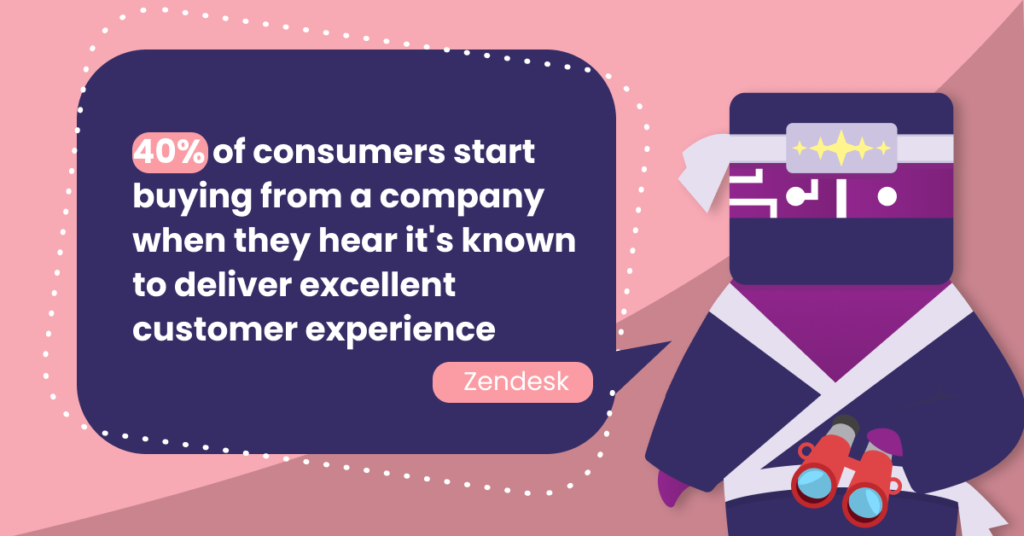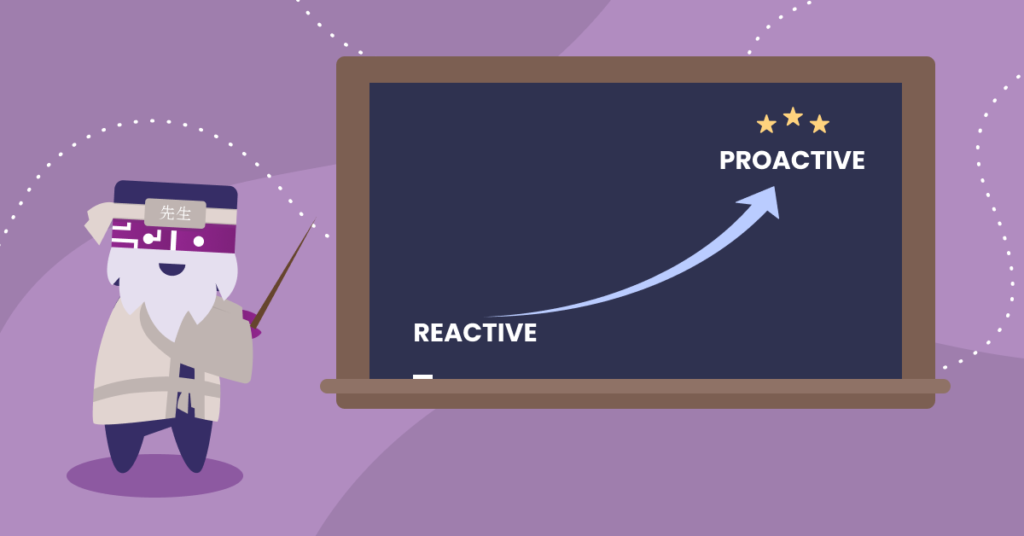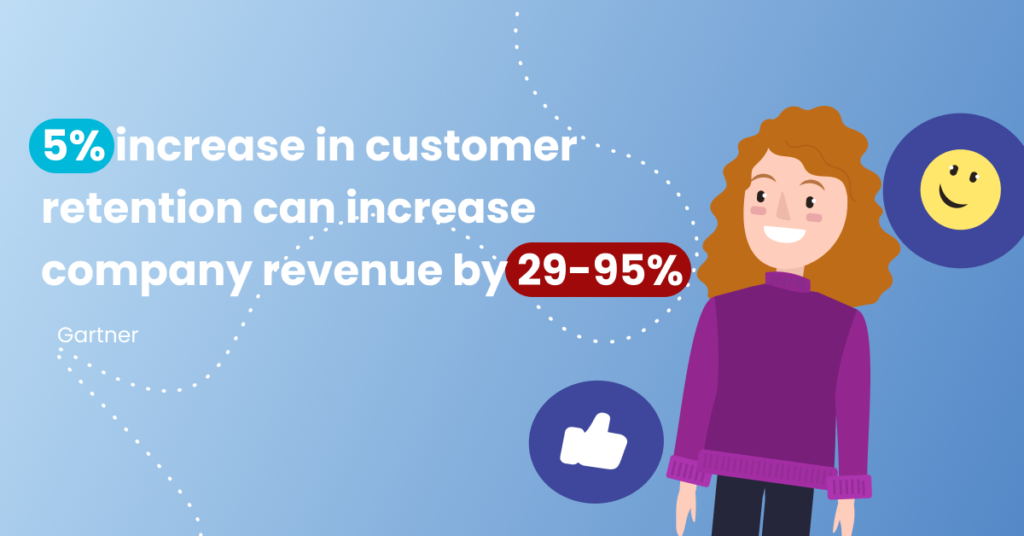Customer success vs customer experience are two concepts you hear talked about a lot these days, but how much does one really affect the other? Do they even fall under the same category? And where does customer service come in? The answers to these questions can help you figure out how best to grow your business.
Here’s the simplest way to explain this.
Your journey with the customer, from the beginning to the end, all the customer operations, is a relay race. Customer-oriented teams pass the baton from one department to another as they reach their goal and make sure their customers get good care.
So where does that customer journey start and where does it end? And what can you do to make it better?
Let’s begin at the scratch line.
What is customer experience?
Customer experience is where it all starts, where you set off on the race, where your relationship with the customer comes into being, whether it is destined to be short or endless.
In fact, great customer experience can make a business. Zendesk found that 40% of consumers start buying from a company when they hear it’s known to deliver excellent customer experience.

Poor customer experience, on the other hand, can kill a business. Harris Interactive found that 89% of consumers switched to a competitor after receiving a bad customer experience.
So what is that excellent customer experience, the Holy Grail every business seeks to gain?
Customer experience is a term that encompasses all of the ways customers interact with your brand. It includes everything from when they start their relationship with you, hearing about you from an ad or a close friend, to how they buy and use your products or services, to how you treat them once they’ve become loyal customers.
To put it short, customer experience is what happens before and after someone makes a purchase from you—it’s the entire journey from first contact to long-term loyalty. It’s your customer everything.
In other words, customer experience is the collective of all interactions your customers have with your products and services. It’s not just about how they feel after buying something; it’s also about how much effort you put into designing the product, service and brand in general, so that customers feel good about themselves when they buy from you.
What is customer service?
Customer service is a broad term that encompasses all of the ways companies communicate with their customers. Unlike customer experience, it is short-term and repetitive, rather than long-term and continuous.
It is all about those touchpoints when the customer gets in contact with the company to resolve an issue, give a recommendation, etc. After all, customers usually turn to customer support when they need help with a problem, not when they want to share how happy they are with their purchase.
Customer service can be proactive or reactive: proactive means anticipating your customer’s needs and being thoughtful about how you address them—for example, sending out a notification when your latest product is available for purchase. Reactive customer service is when you respond in real time to specific requests from customers (like canceling an order).

Customer-focused companies focus on solving problems for their clients, which means helping them use your product or offering refunds if something goes wrong with that product. You might think this sounds like basic business sense; however, not every business practices these principles consistently across departments—or even at all!
In any case, the quality of customer service has a massive impact on the overall customer experience. In fact, 73% of customers say that friendly customer service reps create memorable customer experiences that make them stay loyal to a brand. And 64% of consumers say that the quality of customer experience is more important than the price when buying something, Gartner found.
Want to get started with your QA?

What is customer success?
Customer success is a post-purchase after-care and a company-wide focus on ensuring customers are successful and satisfied with their purchase. The customer success team is the voice of the customer, providing insight into why customers choose to stay or leave, and what they need from your company to ensure loyalty.
Customer success teams are usually proactive: they don’t wait until something goes wrong before they step in; instead, they proactively reach out to customers before an issue arises so that both parties can address it from the start.
In essence, customer success people work to increase customer retention. Even a 5% increase of the number can lead to the overall revenue jump of 25% to 95%., according to Bain & Company.

The difference between customer success and customer experience
One way or another, all customer operations and customer-facing teams make a tightly-knit community. They study the customer, analyze their needs and behaviors, meet and anticipate those needs. And as in any community, everyone and everything is interconnected here.
Read more: Customer operations: support your support for happy customers
How do they work together?
On the operational level, customer success and customer experience teams work together to ensure a great experience for each of your customers, whether they’re new or existing. The customer success team is focused on those that have already signed up for your product or service. While the customer experience team is dedicated to improving the process of getting them there in the first place.
The customer success team typically has a more quantitative focus, such as measuring key metrics like retention rate or churn rate. The purpose is to improve these numbers over time so that you can keep more customers around longer.
Meanwhile, the customer experience team stays focused on improving how prospects perceive your company and its product or service—often through qualitative research methods like interviews and surveys with real people outside of their own organization—by creating personas based on data collected along the way.
Closing thoughts — where it all comes together
Customer operations is a complex game, where there are often more riddles than answers available. But if one thing is clear it’s this.
Customer service is an integral part of customer experience and customer success, but those are far from just good service. In fact, great customer service can have the opposite effect on your customer success if you don’t put the right systems in place to support it.
The first thing you should know about the relationship between customer service and overall customer experience is that it’s not a one-way street—it’s a cycle. You can break that cycle at any point, and lose not only your customers’ loyalty, but also their trust.
Customer service is the frontline of any business. That’s why it’s important to understand what customer service really does for your company, and how it impacts your overall customer experience.



